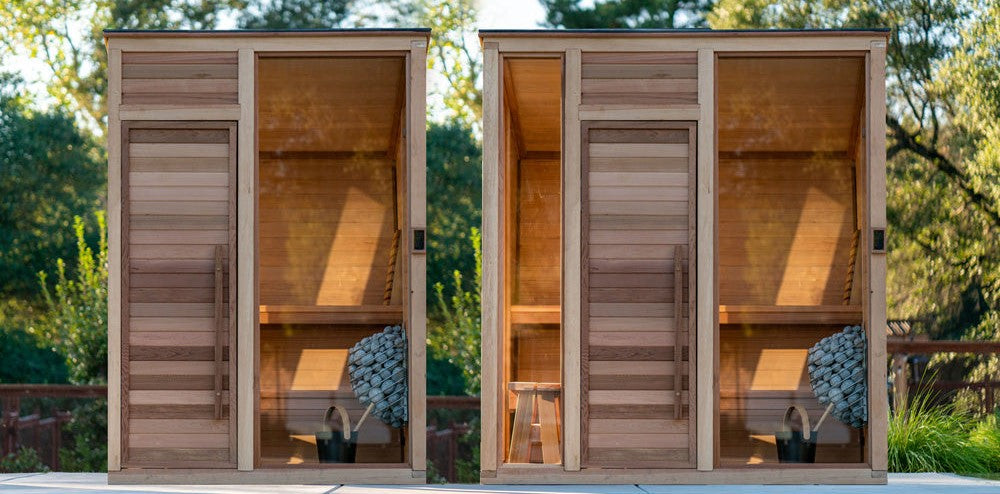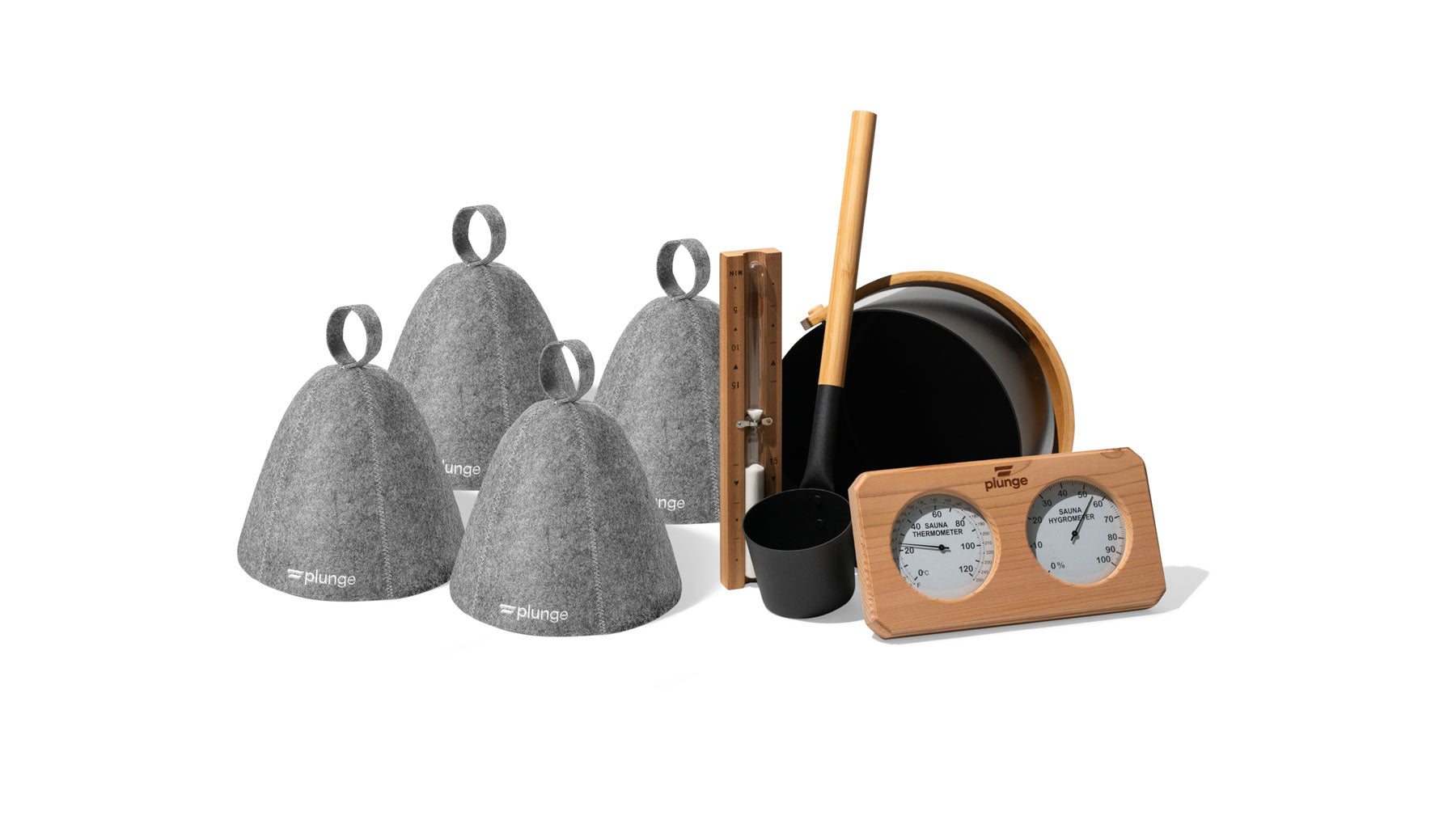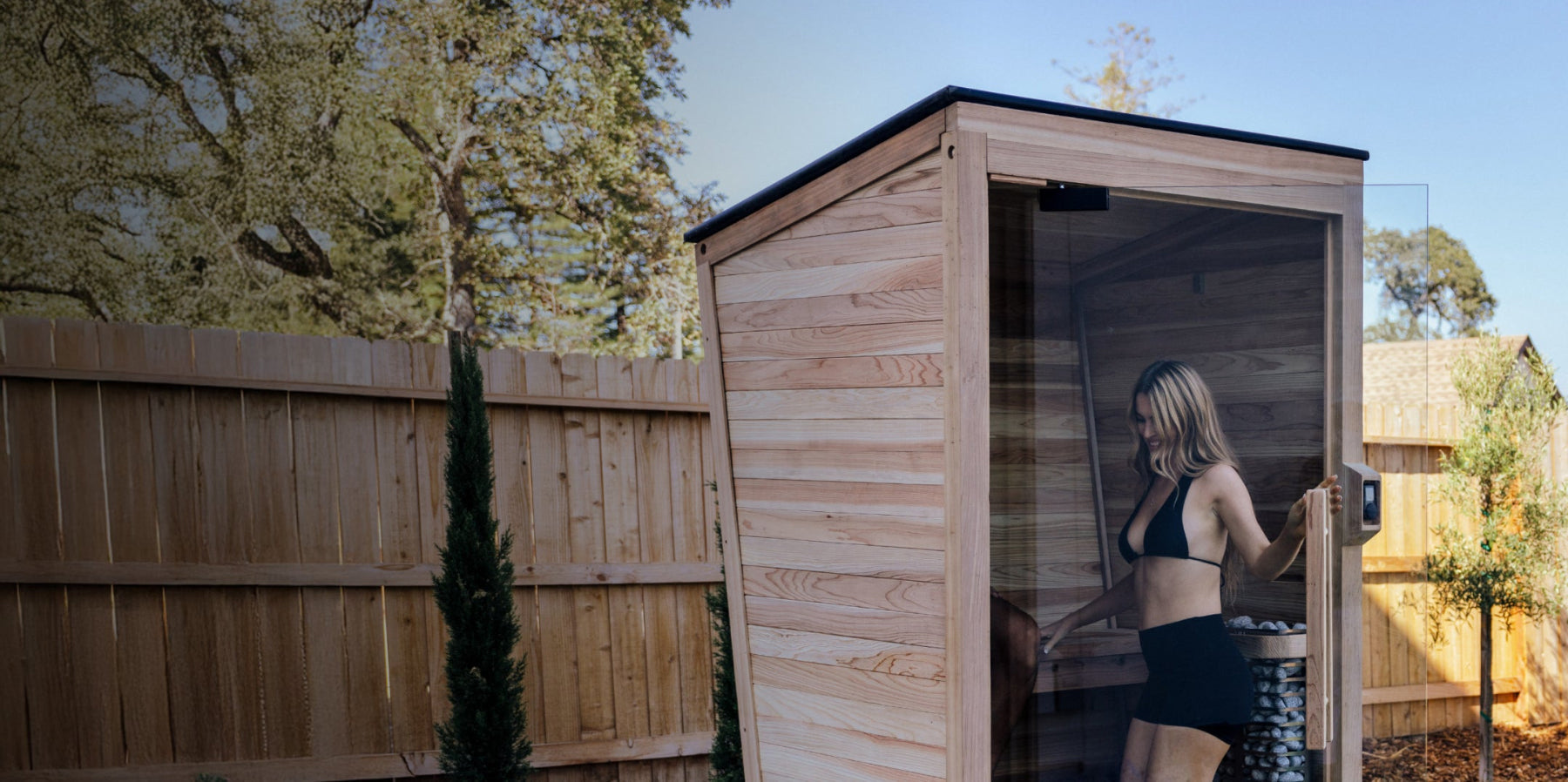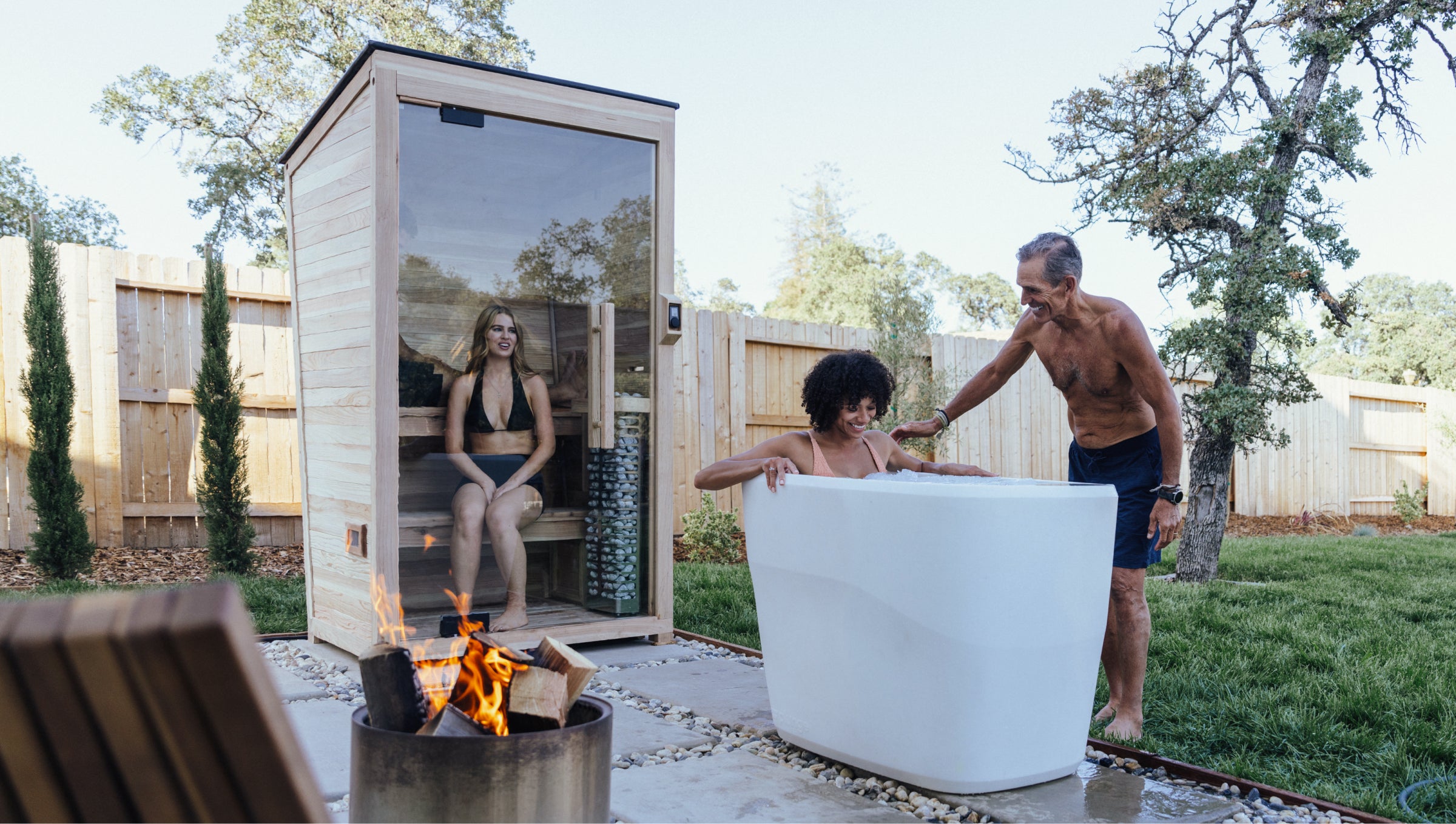
Understanding the Types of Saunas: Which is Best For You?
For millennia, people from various cultures have harnessed the therapeutic power of saunas for their physical and mental health. In addition to their relaxing effects, saunas are a powerful tool for your wellness arsenal, thanks to the science behind sweating. The more you sweat, the more toxins you shed from your body, and saunas can amplify that process.
In this comprehensive guide, we will delve into the different types of saunas, including infrared vs. traditional saunas. Whether you seek a restorative escape from the demands of daily life or a potential targeted wellness solution for weight loss, this article will equip you with the knowledge needed to select the perfect sauna experience tailored to your needs.
Infrared vs. Traditional Sauna
Traditional saunas have deep historical roots, dating back thousands of years, with origins in Northern Europe. These saunas are typically heated with wood, electric stoves, or gas heaters, which warm the air inside to high temperatures. The sauna room itself is often constructed with wood, providing a cozy, rustic ambiance, and the humidity can be adjusted by adding water to heated stones, producing steam.
In contrast, infrared saunas are a more recent development, emerging in the mid-20th century. These saunas employ infrared heaters to emit radiant heat directly onto your body, without significantly heating the surrounding air. Infrared saunas use infrared wavelengths to penetrate the skin and raise your core body temperature, mimicking the natural heat from the sun without the harmful UV rays. Infrared saunas are often made with various materials, including wood, carbon, and ceramic, which efficiently emit these infrared rays.
Differences
The main distinction between the two lies in how they heat and the resulting experience. Traditional saunas offer a more intense, all-encompassing heat, which many people find enjoyable for its relaxing and detoxifying effects. On the other hand, infrared saunas provide a milder heat level, making them preferable for those who may have trouble tolerating higher temperatures.
The choice between infrared and traditional saunas ultimately depends on your personal preferences and health goals. If you prioritize a milder heat therapy session, an infrared sauna may be the better fit. On the other hand, if you’re looking for an authentic, centuries-old sauna experience with higher temperatures and steam, a traditional sauna might be your ideal choice.
What Are the Different Sauna Types?
From the modern allure of infrared saunas to ancient traditions of smoke saunas, let’s take an in-depth look into what makes each sauna type special.
Electric Sauna
Electric saunas are a modern twist on the traditional sauna experience and are appreciated for their ease of use, efficiency, and precision in temperature control. They are heated using electric stoves or heaters, making them straightforward to operate. Offering precise control over temperature settings allows users to tailor the heat to their preferences. These saunas typically reach temperatures between 150°F to 195°F (65°C to 90°C), creating a comfortably warm and rejuvenating environment. Electric saunas can be easily integrated into various settings, from homes to commercial spaces, as they’re known for their efficiency and speed in heating the sauna room.
Pros
- User-Friendly: Electric saunas are easy to operate and provide precise temperature control.
- Efficient Heating: They heat up quickly, minimizing wait time for sauna sessions.
- Versatile: Electric saunas can be installed in a variety of locations and are suitable for both personal and commercial use.
- Higher Temperatures: These also reach higher temperatures of around 150°F to 220°F, providing a more intense heat experience that can be controlled more precisely.
- Steam Generation: Some electric saunas (like Plunge's) support both dry and steam experiences via pouring water on heated rocks.
- Respiratory Relief: The steam from electric saunas with this feature can help open airways and provide relief for individuals with respiratory issues.
Cons
- Operating Costs: Electric saunas can have higher operating costs due to electricity consumption.
- Lack of Traditional Atmosphere: They may not offer the same traditional ambiance as wood burning or smoke saunas.
- Potential for Dry Heat: Some users may find the heat in electric saunas drier than other types, which can affect their personal comfort (although some have the option to produce steam and negate this).
Infrared Sauna
As mentioned above, infrared saunas are a relatively recent development in the world of heat therapy, which emerged in the mid-20th century. Operating at a lower room temperature, typically ranging from 120°F to 150°F (49°C to 66°C), the distinctive feature of infrared saunas lies in their focused radiant heat. These saunas are also energy-efficient and cost-effective, making them an attractive option for many seeking a milder, yet therapeutic, heat therapy experience.
Pros
- Health Benefits: Infrared saunas offer a range of potential health benefits, including pain relief, improved circulation, and detoxification.
- Energy Efficiency: These saunas are cost-effective to operate due to their lower power requirements.
- Accessibility: The lower temperatures and dry heat in infrared saunas make them more comfortable for a broader range of users.
Cons
- Limited Traditional Experience: Infrared saunas lack the traditional experience found in wood-burning and steam saunas.
- Lack of Steam: These don’t generate any steam, so it may be a drawback for those who enjoy a more humid sauna experience
- Longer Sessions: Achieving desired results in an infrared sauna may require longer sessions than some other types.
Wood-Burning (Traditional) Sauna
Originating primarily in Finland, these saunas are a cornerstone of Finnish culture and are renowned for their authentic and rustic sauna experience. Wood-burning saunas are heated by igniting a wood-burning stove or heater inside the sauna room, typically utilizing birch wood or other firewood. Room temperature in a wood-burning sauna can reach around 150°F to 195°F (66°C to 91°C), creating an environment of intense heat and humidity. The unique characteristic of wood-burning saunas lies in the ritualistic process of "löyly," which involves splashing water onto heated stones, generating bursts of steam that enhance the overall experience. The use of wood stoves also imparts a unique aroma and ambiance to the sauna session.
Pros
- Authentic Experience: Wood-burning saunas offer a culturally rich and time-honored sauna experience.
- Unique Aroma: The use of wood stoves creates a distinctive, natural aroma.
- Enhanced Löyly: "Löyly" rituals provide an added dimension to the sauna session, promoting relaxation and purification.
Cons
- Longer Heating Time: Wood-burning saunas can require more time to reach the desired temperature compared to electric or infrared saunas.
- Maintenance: These generally require regular maintenance and the need for a wood supply can be demanding.
- Operating Considerations: When operating a wood-burning sauna, you’ll need to consider factors like ventilation.
Smoke Sauna
Smoke saunas, often regarded as the most ancient form of saunas, find their origins deeply rooted in the Baltic regions. Smoke saunas are heated by burning wood in a special stove that has no chimney. As the wood burns, it releases heat, but more importantly, it produces copious amounts of smoke. This smoke fills the sauna room, creating an intense heat and distinctive aroma. After the heating phase, the sauna is ventilated to allow the smoke to escape, and the heat remains to provide an authentic sauna experience. Smoke saunas typically reach temperatures ranging from 160°F to 190°F (71°C to 88°C).
Pros
- Authenticity: Smoke saunas provide an ancient, culturally immersive sauna experience.
- Unique Aroma: The distinct smoky aroma and atmosphere create a one-of-a-kind ambiance.
- Strong Heat: These saunas generate intense, dry heat, which many sauna enthusiasts appreciate.
Cons
- Longer Heating Time: Preparing a smoke sauna is a time-consuming process.
- Limited Accessibility: The smoky atmosphere may be challenging for individuals with respiratory issues.
- Maintenance: Smoke saunas require meticulous cleaning to manage the soot and ash buildup.
Steam Sauna
Steam saunas, often referred to as steam rooms, have a history that dates back thousands of years, with their origins traced to the Roman Empire and ancient Greek bathing traditions. Steam saunas are characterized by high humidity, which can be invigorating and beneficial for the skin. They’re heated by producing steam through a generator that releases moisture into the room, creating a high-humidity environment. The temperature in a steam sauna typically ranges from 100°F to 120°F (38°C to 49°C). These saunas are known for their soothing experience, often featuring tiled walls, benches, and a continuous flow of steam.
Pros
- Skin Health: Steam saunas promote healthy skin by opening pores and hydrating the skin.
- Respiratory Benefits: The humid air can help soothe respiratory conditions and clear congestion.
- Relaxation: The soothing environment and soft heat make steam saunas ideal for relaxation and stress relief.
Cons
- Limited Detoxification: Steam saunas may not provide the same detoxification benefits as traditional saunas.
- Maintenance: Due to the moisture, steam saunas require regular cleaning and maintenance to prevent things like mold.
- Limited Temperature Control: The temperature range in steam saunas is lower than in some other types, which may not appeal to those seeking higher heat levels.
What is the Best Type of Sauna For You?
We know there are a lot of options to choose from, and the amount and pros and cons can be overwhelming. When it comes to choosing the best sauna for you, a traditional sauna can be an excellent choice. These offer a traditional and time-tested sauna experience that many people find deeply relaxing and beneficial. Many users of traditional saunas report experiencing reduced stress and increased mental clarity, and the soothing environment and heat can help you unwind and de-stress after a long day or a hard workout session. Even better, modern advancements like those featured in our new sauna reduce some of the downsides of older traditional saunas using electric components.
Learn More About Our High-Quality At-Home Saunas
From the ancient roots of smoke saunas to the modern comforts of electric and infrared saunas, each sauna type offers a unique experience, allowing you to tailor your relaxation and rejuvenation journey. If you're considering bringing the magic of saunas to your own home, look no further than Plunge.
In addition to convenience and stress relief, there are many benefits of a home sauna, from boosting your immune system to easing joint and muscle pain. Made from premium materials like incense cedar, our sauna reaches up to 230°F and allows you to precisely control the humidity level from our Plunge mobile app. It also features an ergonomic backrest and flip-up benches so you can share your sauna experience with friends and family. To get started, learn more about our sauna here!






















